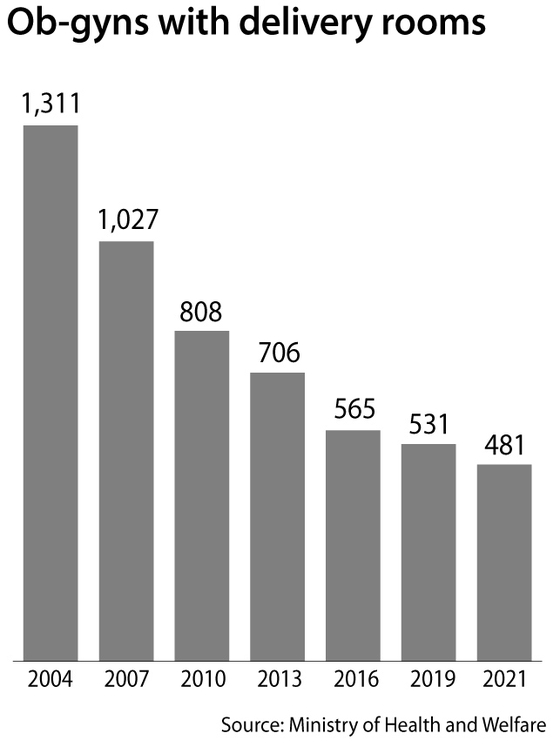Ob-gyns with delivery rooms are rarities in some parts of Korea
One in four places in Korea don’t have an obstetrician-gynecologist, or ob-gyn, equipped with a delivery room, a concrete reflection of the nation’s sinking fertility rate.According to data released by Statistics Korea and the Ministry of Health and Welfare on Sunday, a day before the government-designated Pregnant Women’s Day, 63 out of 250 cities, counties and districts across the nation didn’t have an ob-gyn as of late 2021, and if they did, it didn't have a delivery room.
In June 2011, the corresponding figure was 51.
Most of the areas were in suburbs, where the population crisis has been the most severe.
The number of ob-gyns with delivery rooms in Korea has shrunken by 38.1 percent from 777 in 2011 to 481 last year. In 2004, there were 1,311 ob-gyns in the country with delivery rooms.
Data show that 20 rural areas don’t have an ob-gyn at all – places where the population is a mere 16,000 to 52,000, and continuously shrinking.
Doctors point out that pregnant women in rural areas sometimes have to take an ambulance for over an hour just to find a doctor who can deliver their babies, which can put the lives of the baby and the mother in danger.

“Rather than trying to build more ob-gyn clinics,” said Lee Sang-lim, a researcher at the Korea Institute for Health and Social Affairs, the government “should think of better ways to help pregnant women, such as offering regular checkups and teaming up with local public health centers and fire departments to build an emergency child delivery system.”
The shrinking number of ob-gyns is another indication that Korea is heading off a demographic cliff.
The total fertility rate – the average number of births a woman is projected to give during her reproductive years – stood at 0.81 last year, down from 2020’s 0.84. Korea’s total fertility rate has consistently dropped since 2015, when the figure was 1.24.
Korea has the lowest fertility rate in the world, nearly half the average of advanced economies that are members of the OECD, which is 1.59.
A total fertility rate of at least 2 is needed to sustain a country’s population.
Some 260,000 babies were born in 2021, but at the current rate, Statistics Korea said the country might see fewer than 250,000 born this year. That’s nearly half the number of babies born in 2003, which was about 495,000.
BY SOHN HAE-YONG,LEE SUNG-EUN [lee.sungeun@joongang.co.kr]










with the Korea JoongAng Daily
To write comments, please log in to one of the accounts.
Standards Board Policy (0/250자)